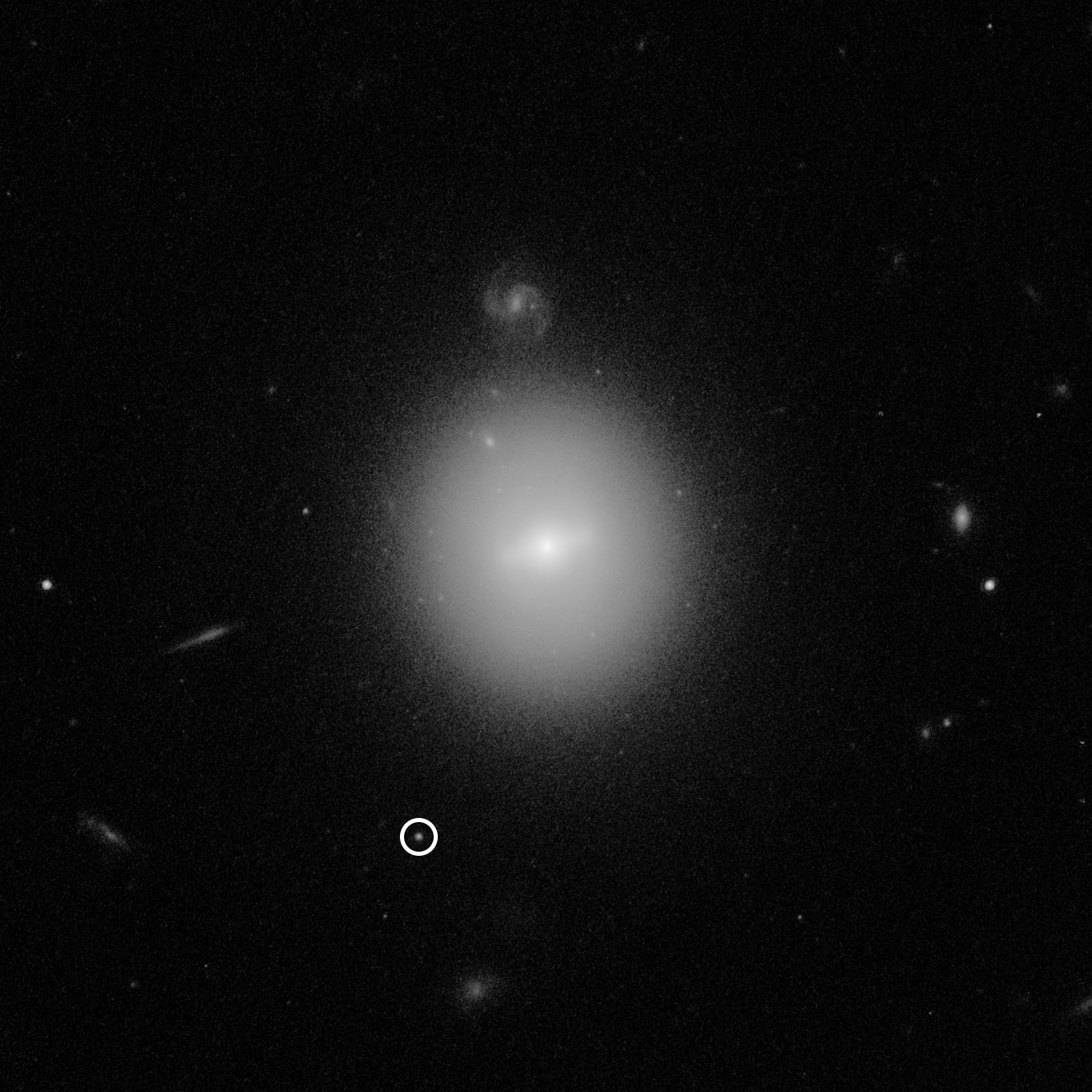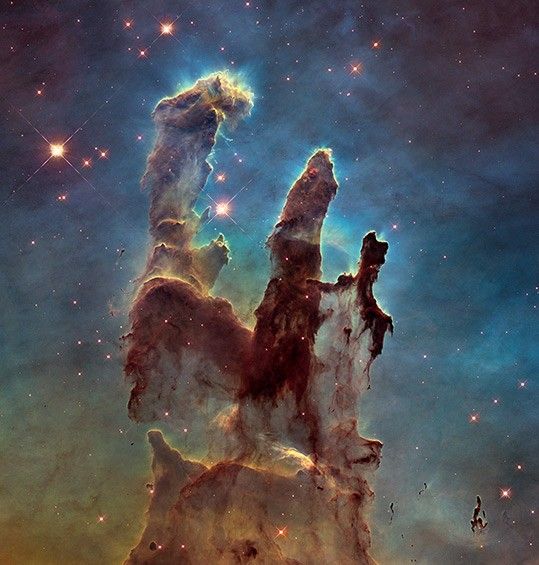Astronomers have found the best evidence for the perpetrator of a cosmic homicide: a black hole of an elusive class known as "intermediate-mass," which betrayed its existence by tearing apart a wayward star that passed too close.
Weighing in at about 50,000 times the mass of our Sun, the black hole is smaller than the supermassive black holes (at millions or billions of solar masses) that lie at the cores of large galaxies, but larger than stellar-mass black holes formed by the collapse of a massive star.
These so-called intermediate-mass black holes (IMBHs) are a long-sought "missing link" in black hole evolution. Though there have been a few other IMBH candidates, researchers consider these new observations the strongest evidence yet for mid-sized black holes in the universe.
It took the combined power of two X-ray observatories and the keen vision of NASA's Hubble Space Telescope to nail down the cosmic beast.
NASA's Goddard Space Flight Center
"Intermediate-mass black holes are very elusive objects, and so it is critical to carefully consider and rule out alternative explanations for each candidate. That is what Hubble has allowed us to do for our candidate," said Dacheng Lin of the University of New Hampshire, principal investigator of the study. The results are published on March 31, 2020, in The Astrophysical Journal Letters.
The story of the discovery reads like a Sherlock Holmes story, involving the meticulous step-by-step case-building necessary to catch the culprit.
Lin and his team used Hubble to follow up on leads from NASA's Chandra X-ray Observatory and ESA's (the European Space Agency) X-ray Multi-Mirror Mission (XMM-Newton). In 2006 these satellites detected a powerful flare of X-rays, but they could not determine whether it originated from inside or outside of our galaxy. Researchers attributed it to a star being torn apart after coming too close to a gravitationally powerful compact object, like a black hole.
Surprisingly, the X-ray source, named 3XMM J215022.4−055108, was not located in a galaxy's center, where massive black holes normally would reside. This raised hopes that an IMBH was the culprit, but first another possible source of the X-ray flare had to be ruled out: a neutron star in our own Milky Way galaxy, cooling off after being heated to a very high temperature. Neutron stars are the crushed remnants of an exploded star.
Hubble was pointed at the X-ray source to resolve its precise location. Deep, high-resolution imaging provides strong evidence that the X-rays emanated not from an isolated source in our galaxy, but instead in a distant, dense star cluster on the outskirts of another galaxy — just the type of place astronomers expected to find an IMBH. Previous Hubble research has shown that the mass of a black hole in the center of a galaxy is proportional to that host galaxy's central bulge. In other words, the more massive the galaxy, the more massive its black hole. Therefore, the star cluster that is home to 3XMM J215022.4−055108 may be the stripped-down core of a lower-mass dwarf galaxy that has been gravitationally and tidally disrupted by its close interactions with its current larger galaxy host.

IMBHs have been particularly difficult to find because they are smaller and less active than supermassive black holes; they do not have readily available sources of fuel, nor as strong a gravitational pull to draw stars and other cosmic material which would produce telltale X-ray glows. Astronomers essentially have to catch an IMBH red-handed in the act of gobbling up a star. Lin and his colleagues combed through the XMM-Newton data archive, searching hundreds of thousands of observations to find one IMBH candidate.
The X-ray glow from the shredded star allowed astronomers to estimate the black hole's mass of 50,000 solar masses. The mass of the IMBH was estimated based on both X-ray luminosity and the spectral shape. "This is much more reliable than using X-ray luminosity alone as typically done before for previous IMBH candidates," said Lin. "The reason why we can use the spectral fits to estimate the IMBH mass for our object is that its spectral evolution showed that it has been in the thermal spectral state, a state commonly seen and well understood in accreting stellar-mass black holes."
This object isn't the first to be considered a likely candidate for an intermediate-mass black hole. In 2009 Hubble teamed up with NASA's Swift observatory and ESA's XMM-Newton to identify what is interpreted as an IMBH, called HLX-1, located towards the edge of the galaxy ESO 243-49. It too is in the center of a young, massive cluster of blue stars that may be a stripped-down dwarf galaxy core. The X-rays come from a hot accretion disk around the black hole. "The main difference is that our object is tearing a star apart, providing strong evidence that it is a massive black hole, instead of a stellar-mass black hole as people often worry about for previous candidates including HLX-1," Lin said.
Finding this IMBH opens the door to the possibility of many more lurking undetected in the dark, waiting to be given away by a star passing too close. Lin plans to continue his meticulous detective work, using the methods his team has proved successful. Many questions remain to be answered. Does a supermassive black hole grow from an IMBH? How do IMBHs themselves form? Are dense star clusters their favored home?
The Hubble Space Telescope is a project of international cooperation between NASA and ESA (European Space Agency). NASA's Goddard Space Flight Center in Greenbelt, Maryland, manages the telescope. The Space Telescope Science Institute (STScI) in Baltimore, Maryland, conducts Hubble science operations. STScI is operated for NASA by the Association of Universities for Research in Astronomy in Washington, D.C.

































